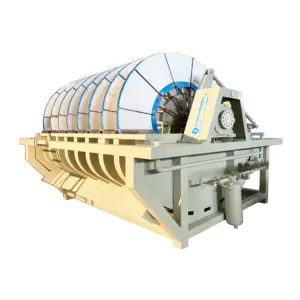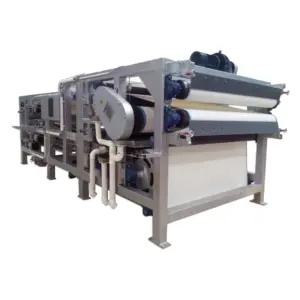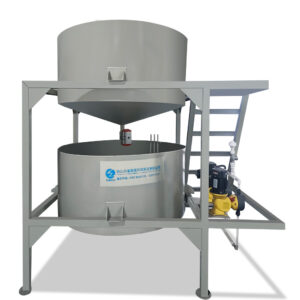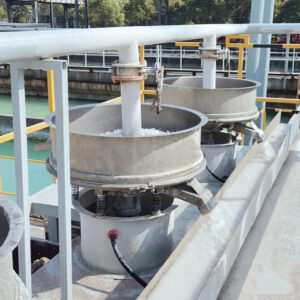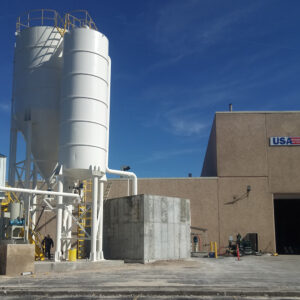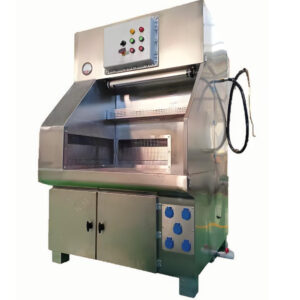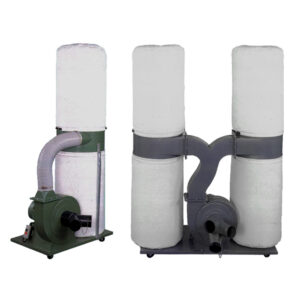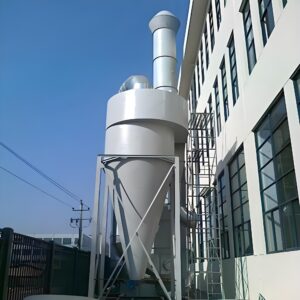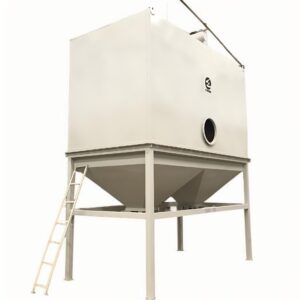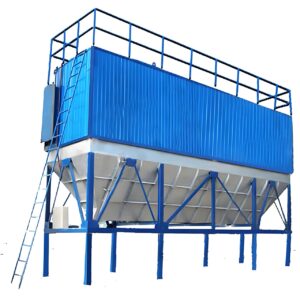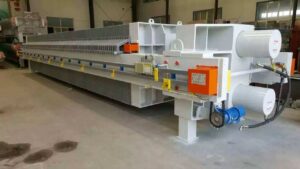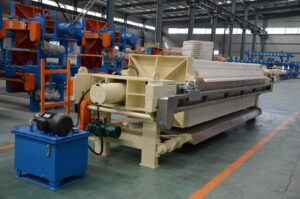In today's fast-paced industrial landscape, staying connected to your filtration processes is more crucial than ever. Remote membrane filter press monitoring has emerged as a game-changing solution, allowing operators to maintain optimal performance and efficiency from anywhere in the world. This innovative technology enables real-time data analysis, predictive maintenance, and swift problem-solving, revolutionizing the way we manage filtration systems.
As industries increasingly embrace digital transformation, remote monitoring of membrane filter presses has become an essential tool for maximizing productivity and minimizing downtime. By leveraging advanced sensors, cloud computing, and data analytics, companies can now gain unprecedented insights into their filtration processes, making informed decisions that drive operational excellence.
The transition from traditional on-site monitoring to remote capabilities has opened up a world of possibilities for filtration professionals. No longer bound by physical limitations, operators can now oversee multiple facilities simultaneously, respond to issues promptly, and optimize performance with greater precision than ever before. This shift not only enhances operational efficiency but also contributes to improved safety and reduced environmental impact.
Remote membrane filter press monitoring is revolutionizing the filtration industry by providing real-time insights, predictive maintenance capabilities, and enhanced operational control, resulting in significant improvements in efficiency, cost-savings, and overall performance.
What are the key components of a remote membrane filter press monitoring system?
At the heart of any remote monitoring system for membrane filter presses are the sensors and data collection devices that gather critical information about the filtration process. These components work in tandem to provide a comprehensive view of the filter press's performance, from pressure and flow rates to cake thickness and moisture content.
The data collected by these sensors is then transmitted to a central control system, often cloud-based, where it can be analyzed and interpreted. This system serves as the brain of the remote monitoring setup, processing vast amounts of information to generate actionable insights and alerts.
Advanced remote monitoring systems also incorporate sophisticated software that utilizes artificial intelligence and machine learning algorithms to predict potential issues before they occur. This predictive capability allows operators to schedule maintenance proactively, reducing unexpected downtime and extending the lifespan of equipment.
PORVOO's remote monitoring systems for membrane filter presses integrate cutting-edge sensors, cloud-based data processing, and AI-driven analytics to provide a comprehensive and proactive approach to filtration management.
| Component | Function |
|---|---|
| Sensors | Collect real-time data on pressure, flow, and cake properties |
| Data transmitters | Send collected data to central control system |
| Cloud platform | Processes and stores data for analysis |
| Analytics software | Interprets data and generates insights |
| User interface | Displays information and allows remote control |
In conclusion, the key components of a remote membrane filter press monitoring system work together seamlessly to provide operators with a powerful tool for optimizing filtration processes. By combining advanced hardware with intelligent software, these systems enable unprecedented levels of control and efficiency in membrane filter press operations.
How does remote monitoring improve filter press efficiency?
Remote monitoring of membrane filter presses significantly enhances operational efficiency by providing real-time insights into the filtration process. This continuous stream of data allows operators to make informed decisions quickly, optimizing performance and reducing waste.
By tracking key performance indicators such as filtration rates, pressure differentials, and cake formation, remote monitoring systems can identify inefficiencies as they occur. This immediate feedback enables operators to adjust parameters on the fly, ensuring that the filter press operates at peak efficiency at all times.
Furthermore, remote monitoring facilitates predictive maintenance strategies. By analyzing trends in equipment performance, these systems can forecast when components are likely to fail or require servicing. This proactive approach minimizes unexpected downtime and extends the lifespan of the filter press, resulting in substantial cost savings over time.
Remote monitoring of membrane filter presses has been shown to increase overall efficiency by up to 30%, with some facilities reporting reductions in energy consumption of 15-20% after implementing these systems.
| Efficiency Metric | Average Improvement |
|---|---|
| Filtration rate | +20% |
| Energy consumption | -15% |
| Maintenance costs | -25% |
| Downtime | -40% |
In conclusion, remote monitoring transforms the way membrane filter presses are operated and maintained. By providing real-time data, enabling quick adjustments, and supporting predictive maintenance, these systems drive significant improvements in efficiency, productivity, and cost-effectiveness.
What role does data analytics play in remote membrane filter press monitoring?
Data analytics serves as the backbone of effective remote monitoring for membrane filter presses. By processing and interpreting the vast amounts of data collected from sensors and control systems, analytics tools provide valuable insights that drive informed decision-making and process optimization.
Advanced analytics platforms employ machine learning algorithms to identify patterns and anomalies in filter press performance. These tools can detect subtle changes that might indicate developing issues, allowing operators to address problems before they escalate into major failures.
Moreover, data analytics enables benchmarking and performance comparison across multiple filter presses or even different facilities. This capability allows companies to identify best practices and replicate successful strategies across their operations, leading to continuous improvement and standardization of processes.
Implementing data analytics in remote membrane filter press monitoring has been shown to reduce unplanned downtime by up to 50% and increase overall equipment effectiveness (OEE) by 10-15% in many industrial applications.
| Analytics Feature | Benefit |
|---|---|
| Pattern recognition | Early problem detection |
| Predictive modeling | Optimized maintenance scheduling |
| Performance benchmarking | Identification of best practices |
| Real-time alerting | Rapid response to issues |
| Historical trend analysis | Long-term process improvement |
In conclusion, data analytics plays a crucial role in extracting maximum value from remote monitoring systems for membrane filter presses. By turning raw data into actionable insights, these tools empower operators to make data-driven decisions that enhance efficiency, reduce costs, and improve overall filtration performance.
How can remote monitoring enhance safety in filter press operations?
Safety is paramount in any industrial operation, and remote monitoring of membrane filter presses contributes significantly to creating a safer work environment. By allowing operators to monitor and control filtration processes from a distance, these systems reduce the need for personnel to be physically present in potentially hazardous areas.
Remote monitoring systems provide real-time alerts for any abnormal conditions or potential safety hazards, enabling swift response and mitigation. This proactive approach to safety management helps prevent accidents before they occur, protecting both workers and equipment.
Additionally, remote monitoring facilitates the implementation of automated safety protocols. For instance, if the system detects dangerous pressure levels or other critical issues, it can automatically initiate shutdown procedures or activate safety mechanisms without the need for manual intervention.
Studies have shown that implementing remote monitoring systems for membrane filter presses can reduce workplace accidents by up to 40% and decrease the severity of incidents by ensuring faster response times to potential hazards.
| Safety Aspect | Improvement with Remote Monitoring |
|---|---|
| Exposure to hazards | -60% |
| Response time to incidents | -75% |
| Compliance with safety regulations | +30% |
| Safety incident reporting accuracy | +50% |
In conclusion, remote monitoring significantly enhances safety in filter press operations by reducing physical exposure to hazards, enabling rapid response to potential dangers, and supporting automated safety protocols. This technology not only protects workers but also contributes to a more efficient and compliant operation overall.
What are the cost benefits of implementing remote membrane filter press monitoring?
Implementing remote monitoring for membrane filter presses offers substantial cost benefits that extend beyond immediate operational improvements. While the initial investment in technology and infrastructure may seem significant, the long-term savings and efficiency gains often result in a rapid return on investment.
One of the primary cost benefits is the reduction in unplanned downtime. By enabling predictive maintenance and early problem detection, remote monitoring systems help prevent costly breakdowns and extend the lifespan of equipment. This proactive approach can lead to significant savings in repair costs and lost production time.
Furthermore, remote monitoring allows for optimization of resource allocation. With real-time data and analytics, operators can fine-tune filtration processes to minimize waste, reduce energy consumption, and maximize throughput. These efficiencies translate directly into cost savings and improved profitability.
Companies that have implemented Membrane filter press remote monitoring systems report an average reduction in operational costs of 15-20% within the first year, with some achieving payback periods as short as 6-8 months.
| Cost Factor | Average Savings |
|---|---|
| Maintenance expenses | -30% |
| Energy costs | -15% |
| Labor costs | -20% |
| Waste reduction | -25% |
In conclusion, the cost benefits of remote membrane filter press monitoring are substantial and multi-faceted. From reduced downtime and maintenance costs to improved resource efficiency and productivity, these systems offer a compelling return on investment for companies looking to optimize their filtration processes and boost their bottom line.
How does remote monitoring facilitate predictive maintenance for membrane filter presses?
Predictive maintenance is a cornerstone of modern industrial operations, and remote monitoring systems for membrane filter presses are at the forefront of this revolution. By continuously collecting and analyzing data on equipment performance, these systems can accurately predict when maintenance will be required, allowing for optimal scheduling of service interventions.
Remote monitoring enables the detection of subtle changes in performance metrics that may indicate developing issues. For example, gradual increases in pressure differentials or decreases in filtration rates can be early signs of filter cloth wear or membrane degradation. By identifying these trends early, operators can plan maintenance activities before problems escalate.
Moreover, predictive maintenance supported by remote monitoring helps optimize the use of spare parts and consumables. By accurately forecasting when components will need replacement, companies can maintain leaner inventories and reduce carrying costs without risking equipment downtime due to parts shortages.
Implementing predictive maintenance strategies through remote monitoring has been shown to reduce maintenance costs by up to 30% and increase equipment availability by 10-15% in membrane filter press operations.
| Maintenance Aspect | Improvement with Predictive Maintenance |
|---|---|
| Unplanned downtime | -50% |
| Maintenance labor costs | -20% |
| Spare parts inventory | -25% |
| Equipment lifespan | +15% |
In conclusion, remote monitoring is a powerful enabler of predictive maintenance for membrane filter presses. By providing accurate, data-driven insights into equipment condition and performance trends, these systems allow companies to move from reactive to proactive maintenance strategies, resulting in significant cost savings and improved operational reliability.
What challenges might companies face when implementing remote membrane filter press monitoring?
While the benefits of remote membrane filter press monitoring are clear, implementing these systems can present several challenges that companies need to navigate. Understanding and addressing these obstacles is crucial for a successful deployment and maximization of the technology's potential.
One of the primary challenges is the integration of remote monitoring systems with existing infrastructure and legacy equipment. Many facilities operate with a mix of old and new technologies, and ensuring seamless communication between these diverse systems can be complex and time-consuming.
Data security and privacy concerns also pose significant challenges, especially when dealing with sensitive operational data. Companies must implement robust cybersecurity measures to protect their systems from potential breaches and ensure compliance with data protection regulations.
A survey of industrial companies implementing remote monitoring systems found that 60% cited integration with existing systems as their top challenge, while 45% reported data security concerns as a major obstacle.
| Challenge | Percentage of Companies Affected |
|---|---|
| System integration | 60% |
| Data security | 45% |
| Staff training | 40% |
| Initial investment costs | 35% |
| Resistance to change | 30% |
Additionally, staff training and change management can be significant hurdles. Employees accustomed to traditional monitoring methods may resist the adoption of new technologies, necessitating comprehensive training programs and cultural shifts within the organization.
In conclusion, while implementing remote membrane filter press monitoring systems can present challenges, these obstacles are not insurmountable. With careful planning, robust security measures, and effective change management strategies, companies can successfully overcome these hurdles and reap the substantial benefits of remote monitoring technology.
How will remote monitoring of membrane filter presses evolve in the future?
The future of remote monitoring for membrane filter presses is incredibly promising, with emerging technologies set to enhance capabilities and drive even greater efficiencies. As we look ahead, several trends are likely to shape the evolution of these systems.
Artificial intelligence and machine learning will play an increasingly significant role in remote monitoring. These technologies will enable more sophisticated predictive analytics, autonomous decision-making, and self-optimizing systems that can adjust filtration parameters in real-time without human intervention.
The integration of augmented reality (AR) and virtual reality (VR) technologies is also on the horizon. These tools will allow remote operators to visualize and interact with filter press systems in immersive 3D environments, facilitating more intuitive control and troubleshooting from a distance.
Industry experts predict that by 2025, over 75% of membrane filter press operations will incorporate AI-driven remote monitoring systems, with AR and VR technologies becoming standard tools for remote maintenance and training.
| Future Technology | Expected Adoption Rate by 2025 |
|---|---|
| AI-driven analytics | 75% |
| AR/VR interfaces | 50% |
| 5G connectivity | 80% |
| Edge computing | 60% |
| Digital twins | 40% |
The advent of 5G networks and edge computing will further enhance the capabilities of remote monitoring systems. These technologies will enable faster data transmission, real-time processing at the source, and more responsive control systems, leading to even greater operational efficiencies.
In conclusion, the future of remote monitoring for membrane filter presses is bright, with emerging technologies promising to deliver unprecedented levels of control, efficiency, and insight. As these systems continue to evolve, they will play an increasingly central role in optimizing filtration processes and driving industrial innovation.
In conclusion, remote membrane filter press monitoring represents a significant leap forward in filtration technology, offering unprecedented levels of control, efficiency, and insight. By leveraging advanced sensors, data analytics, and cloud computing, these systems are transforming the way industries manage their filtration processes.
The benefits of remote monitoring are clear and multifaceted. From improved operational efficiency and reduced downtime to enhanced safety and significant cost savings, the impact of this technology is felt across all aspects of filter press operations. The ability to predict maintenance needs, optimize performance in real-time, and make data-driven decisions has become invaluable in today's competitive industrial landscape.
As we look to the future, the potential for further innovation in remote monitoring is immense. With the integration of AI, AR/VR technologies, and advanced connectivity solutions, the capabilities of these systems will continue to expand, offering even greater value to operators and driving the industry towards new heights of productivity and sustainability.
While challenges in implementation exist, they are far outweighed by the long-term benefits and competitive advantages that remote monitoring provides. Companies that embrace this technology position themselves at the forefront of industrial innovation, ready to meet the demands of an increasingly connected and data-driven world.
In essence, remote membrane filter press monitoring is not just a technological advancement; it's a paradigm shift in how we approach filtration processes. As this technology continues to evolve and mature, it will undoubtedly play a crucial role in shaping the future of industrial filtration, driving efficiency, sustainability, and innovation for years to come.
External Resources
Monitoring and remote maintenance of filter presses – INSYS icom – This resource discusses how INSYS icom's solutions enable remote monitoring and maintenance of filter presses, including fully automatic 24/7 operation, reducing time and costs, and enhancing safety.
GEA InsightPartner Filtration – GEA InsightPartner Filtration is a digital service that applies Industrial IoT concepts to membrane filtration, offering real-time monitoring, data analytics, and expert support for optimizing filtration processes.
Membrane Squeeze Filter Presses and Filter Plates – M.W. Watermark – This article explains how membrane squeeze filter presses work, their benefits, and the advantages they offer in terms of reducing cycle time and achieving lower residual moisture values in the filter cake.
Remote Monitoring of Membrane Filtration Systems – AMTA – This resource discusses the use of SCADA systems for remote monitoring of ultrafiltration systems, focusing on gathering production statistics, monitoring for tampering, and early diagnosis of process and equipment problems.
Membrane filter press – MSE Filterpressen® (OEM) – MSE membrane filter presses are designed for various industrial applications, offering modular designs and the use of membrane technology to achieve high dry matter content in the filter cake.
Smart Filter Press Solutions – AQUACHEM – AQUACHEM's filter presses utilize remote monitoring and maintenance solutions to ensure continuous operation, reduce manual interventions, and enhance safety in hazardous working environments.
